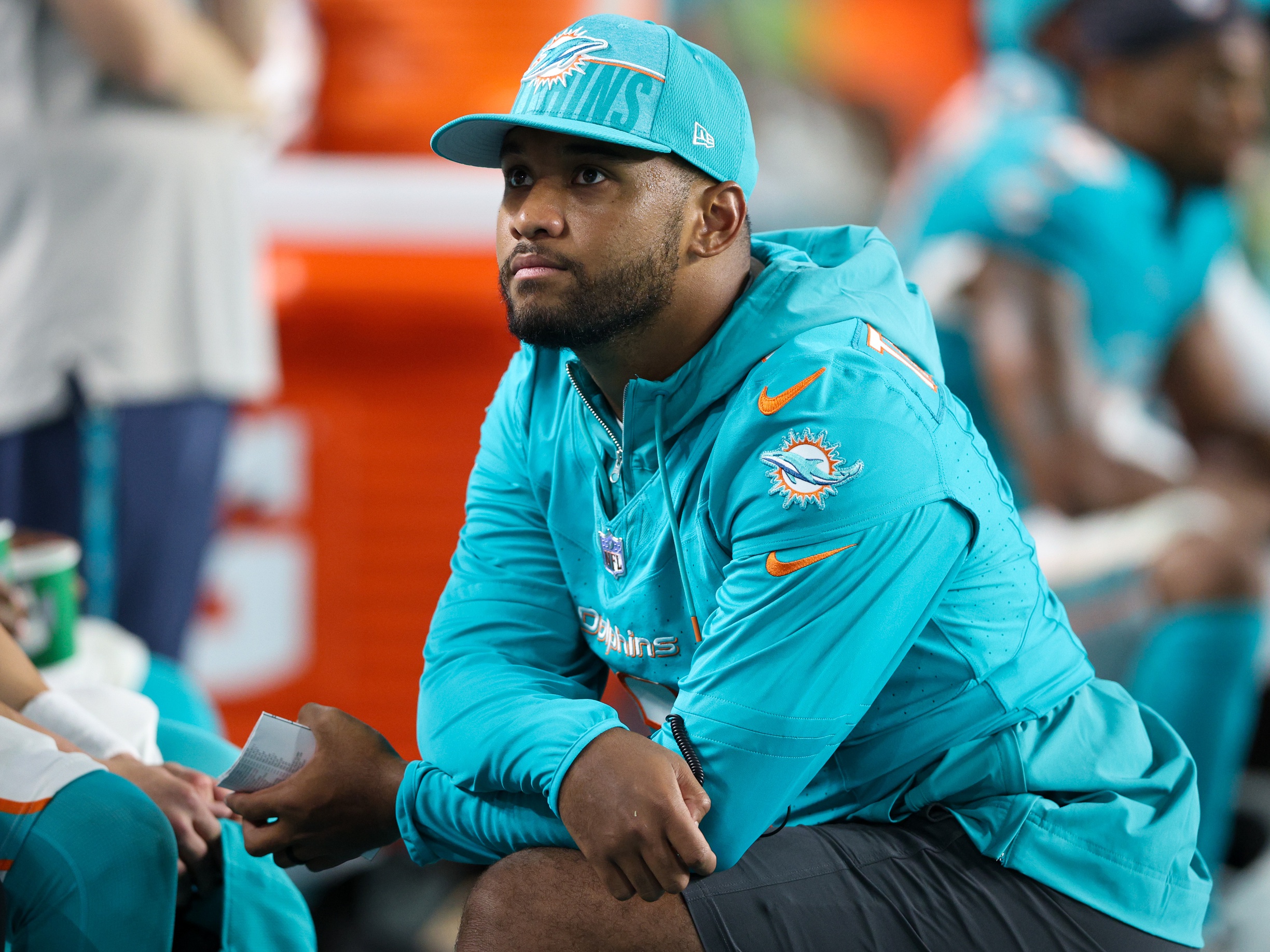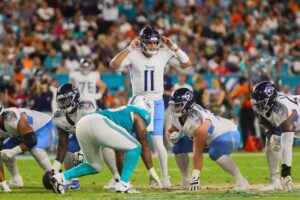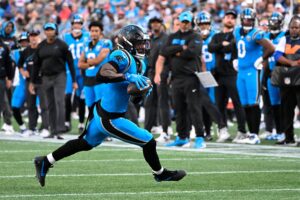Concussions and their long-term effects have become a major concern in the NFL. They have again become front and center with the latest concussion felt by Miami Dolphins quaterback Tua Tagovailoa with possible career-ending implications. As awareness of the potential dangers of repeated head trauma has grown, an increasing number of players have made the difficult decision to retire early, prioritizing their long-term health over their football careers. This trend has not only impacted the league but has also sparked important conversations about player safety and the future of the sport.
Early Retirements and Growing Awareness
One of the earliest high-profile retirements due to concussion concerns came in 1994 when Chicago Bears fullback Merrill Hoge announced his retirement at age 29. Hoge cited the dangers of returning to football after sustaining several concussions as the reason for his decision. This marked one of the first instances where a player openly acknowledged the risks associated with repeated head injuries.
As research into chronic traumatic encephalopathy (CTE) and other neurological issues related to football began to emerge in the early 2000s, more players started to take notice. In 2015, San Francisco 49ers linebacker Chris Borland made headlines when he retired after just one season in the NFL at age 24. Borland’s decision was based on extensive research he conducted on the long-term effects of repetitive head trauma. He consulted with family members, concussion researchers, and fellow players before making his choice.
Borland’s retirement was particularly significant because it represented a young player in his prime walking away from a promising career due to health concerns. His decision sparked widespread discussion about the risks of playing football and the choices players face regarding their long-term well-being.
Long-Term Effects and Research
Studies have shown that NFL players, particularly those who have experienced multiple concussions, may be at higher risk for various neurological issues later in life. A study conducted by Mass General Brigham found that retired NFL players with a history of concussion symptoms showed reduced cognitive performance decades after retirement.
The discovery of CTE in the brains of deceased NFL players has been particularly alarming. As of 2018, CTE had been found in the brains of over 100 former NFL players. This has led to increased research into the long-term effects of repeated head trauma and efforts to develop better diagnostic tools and treatment options.
Mike Webster’s Impact on Concussion Awareness
There is no clear indication that Mike Webster officially retired from the NFL due to concussions or brain injuries. However, the information suggests that Webster’s post-football life was severely impacted by the brain trauma he sustained during his playing career.
Webster played for 17 seasons in the NFL, primarily with the Pittsburgh Steelers, before retiring in 1990 at the age of 38. After retirement, Webster experienced significant cognitive and behavioral issues, including memory loss, depression, and erratic behavior. Webster died in 2002 at the age of 50 from a heart attack.
Following his death, Dr. Bennet Omalu examined Webster’s brain and discovered evidence of chronic traumatic encephalopathy (CTE), making Webster the first former NFL player to be diagnosed with this condition. Webster’s brain showed signs of severe damage, resembling that of boxers with “dementia pugilistica” or “punch-drunk syndrome.”
During his career, Webster likely sustained numerous concussions and subconcussive impacts, though these were not officially documented or treated at the time. Webster’s case became a pivotal moment in understanding the long-term effects of repeated head trauma in football players and sparked increased research and awareness about CTE in the NFL.
While Webster’s retirement was not explicitly due to concussions, his post-career struggles and posthumous diagnosis of CTE highlight the severe impact that his football career had on his brain health. His case has become foundational in narratives about football’s concussion crisis and has led to increased scrutiny of player safety in the NFL.
Notable Retirements Due to Concussions
Many prominent players have retired early citing concussion concerns.
Jordan Reed
The Pro Bowl tight end retired in 2021 at age 30 after suffering at least seven documented concussions during his career with Washington and San Francisco. Reed said doctors advised him that continuing to play would not be wise for his long-term health.
Luke Kuechly
The former Carolina Panthers linebacker retired in 2020 at age 28 after suffering multiple concussions during his career. Kuechly was a five-time All-Pro and seven-time Pro Bowler who was considered one of the best linebackers in the NFL. While he didn’t explicitly cite concussions as the reason, he said he didn’t feel it was the “right decision” to continue playing.
Ali Marpet
The Tampa Bay Buccaneers offensive lineman surprisingly retired in 2022 at age 28, citing concerns about the impact of multiple concussions on his long-term health. He had dealt with concussion issues as recently as the 2020 season, when he was forced to miss 3 regular-season games due to a concussion. In an interview after his retirement, Marpet specifically acknowledged head trauma as a major factor in his decision, stating: “There are also the unknowns of the head trauma of the NFL and how that plays out.” Marpet explained that one of his strongest values is health, and continuing to play football didn’t align with living out what was important to him.
Kyle Fitts
The linebacker retired in 2022 at age 27 after playing for the Chicago Bears and Arizona Cardinals. Fitts cited “too many concussions” as the reason, saying it was no longer safe for him to continue playing. He explained, “After 21 years of playing, football has come to an end for me. Due to too many concussions and the severity of my recent one, it is no longer safe for me to continue to play.”
A.J. Tarpley
Tarpley retired at the age of 23, after playing only one season with the Buffalo Bills in 2015. He suffered the third and fourth concussions of his career during his rookie season with the Bills. His last concussion caused symptoms including vision issues, a migraine headache, and nausea. In his retirement announcement on Instagram, Tarpley stated he was “walking away to preserve [his] future health.” Tarpley explained that his decision was based on “coming to terms with the totality of his concussion history and what is asked of him as a linebacker.
Frank Wycheck
Frank Wycheck retired from the NFL after the 2003 season primarily due to concerns about concussions and their long-term effects. Wycheck got two concussions in the span of a month during the 2003 season, which was his final year in the NFL. He missed six games due to these concussions in 2003 before finishing the season. Wycheck cited the “lingering effects” of the “physical stuff,” including the two concussions in 2003, as reasons for his retirement. In later years, Wycheck estimated he had suffered about 25 concussions throughout his football career. He expressed concerns about the long-term effects of these head injuries, including symptoms like migraines, depression, anxiety, and memory issues.
Chris Borland
Borland made headlines when he retired in 2015 after just one season in the NFL at age 24. The San Francisco 49ers linebacker cited concerns about the long-term effects of repetitive head trauma as his reason for retiring. He extensively researched the risks before making his decision.
Steve Young
Steve Young retired from the NFL in 2000 primarily due to concerns about concussions and their long-term effects on his health. Young suffered multiple concussions throughout his career, with his final concussion occurring in a game against the Arizona Cardinals on September 27, 1999. This last concussion, his seventh documented one, was particularly severe. Young was knocked unconscious after a hit by cornerback Aeneas Williams. After this injury, Young never played another NFL game, though he didn’t officially announce his retirement until June 12, 2000.
Troy Aikman
Troy Aikman retired from the NFL primarily due to health concerns, particularly concussions and back problems at only 34 years of age. “I know it’s the right thing for me because of my health, concussions, the back problems I’ve had. It took its toll.” Aikman had suffered multiple concussions throughout his career, which was a significant factor in his decision to retire.
These retirements represent a cross-section of positions and experience levels, demonstrating that concussion concerns affect players throughout the league.
Impact on the NFL and Player Safety
The increasing number of early retirements due to concussion concerns has forced the NFL to confront the issue of player safety more directly. The league has implemented various rule changes and protocols aimed at reducing the risk of head injuries and improving the management of concussions when they do occur.
Some of these changes include:
1. Stricter concussion protocols for diagnosing and treating players
2. Rule changes to penalize helmet-to-helmet hits and protect defenseless players
3. Improvements in helmet technology and requirements
4. Limits on full-contact practices during the season
Despite these efforts, concerns about player safety persist. The case of Miami Dolphins quarterback Tua Tagovailoa in 2022, who suffered multiple concussions in a short period, reignited debates about the effectiveness of the league’s concussion protocols.
Player Perspectives
Many former players have become advocates for increased awareness and research into concussions and brain injuries. Jack Youngblood, for example, has established the Center for NeuroEnhancement to address these issues. Other players have shared their experiences of playing through concussions, highlighting the lack of understanding about these injuries in previous decades.
Some players, like Julius Thomas, who played in the NFL for seven years before becoming a Professor of Neuroscience, are now working to bridge the gap between their playing experience and scientific research.
The Future of Football and Player Safety
The issue of concussions and early retirements continues to shape discussions about the future of football at all levels. While the NFL has made strides in addressing player safety, challenges remain. Some players and researchers have suggested more radical changes, such as removing facemasks to reduce the use of helmets as weapons.
As research progresses and awareness grows, it’s likely that more players will carefully weigh the risks and benefits of their football careers. This ongoing shift in perspective may lead to further changes in how the game is played and managed at all levels, from youth leagues to the NFL.
Conclusion
The history of NFL players retiring due to concussions reflects a growing understanding of the long-term risks associated with repeated head trauma in football. From early retirements like Merrill Hoge’s in the 1990s to more recent high-profile cases like Luke Kuechly and Chris Borland, these decisions have played a crucial role in raising awareness and driving change within the sport.
As research continues and more former players speak out about their experiences, the NFL and the broader football community face ongoing challenges in balancing the inherent physicality of the sport with the need to protect players’ long-term health. The trend of early retirements due to concussion concerns serves as a stark reminder of the human cost of America’s most popular sport and the importance of continued efforts to improve player safety at all levels of the game.






